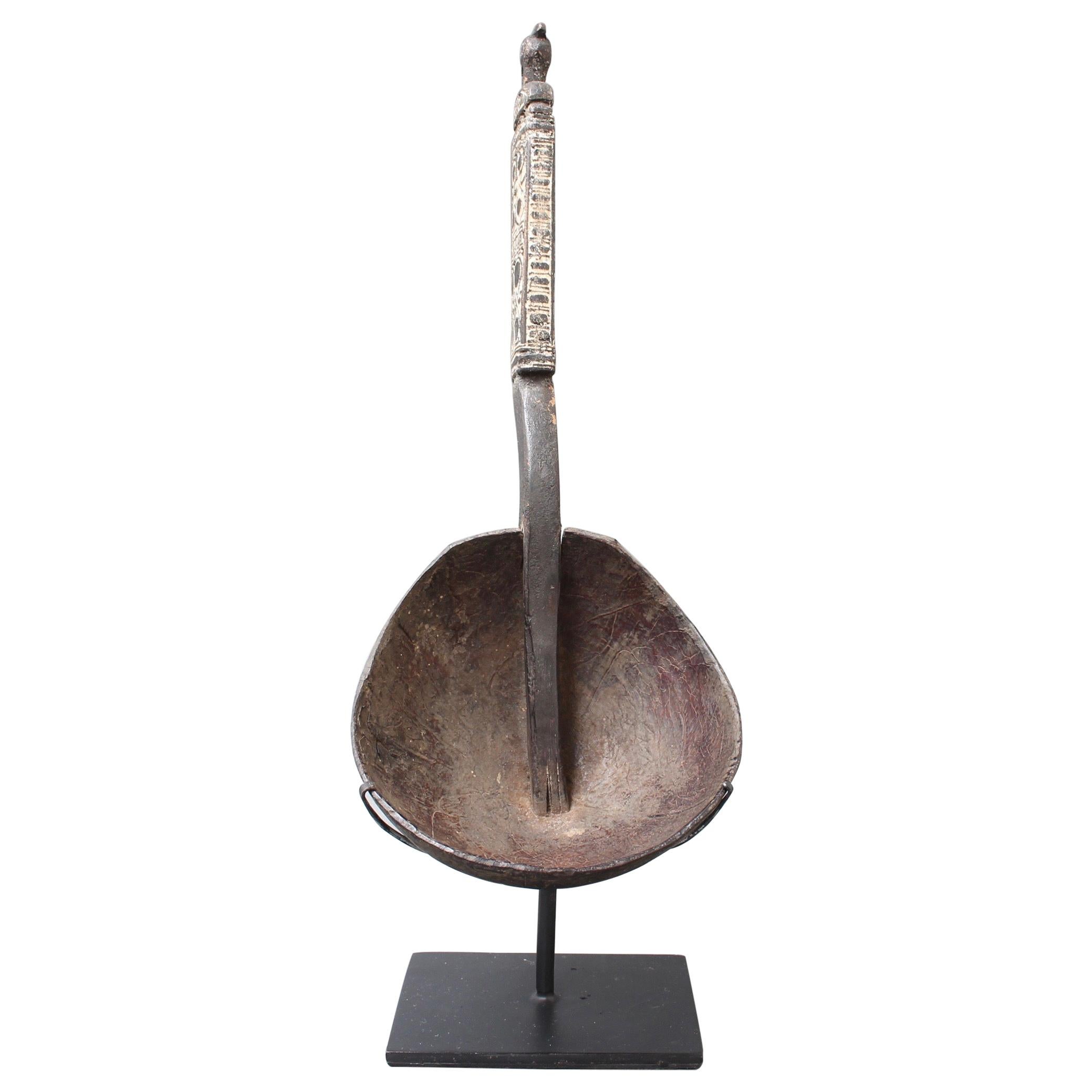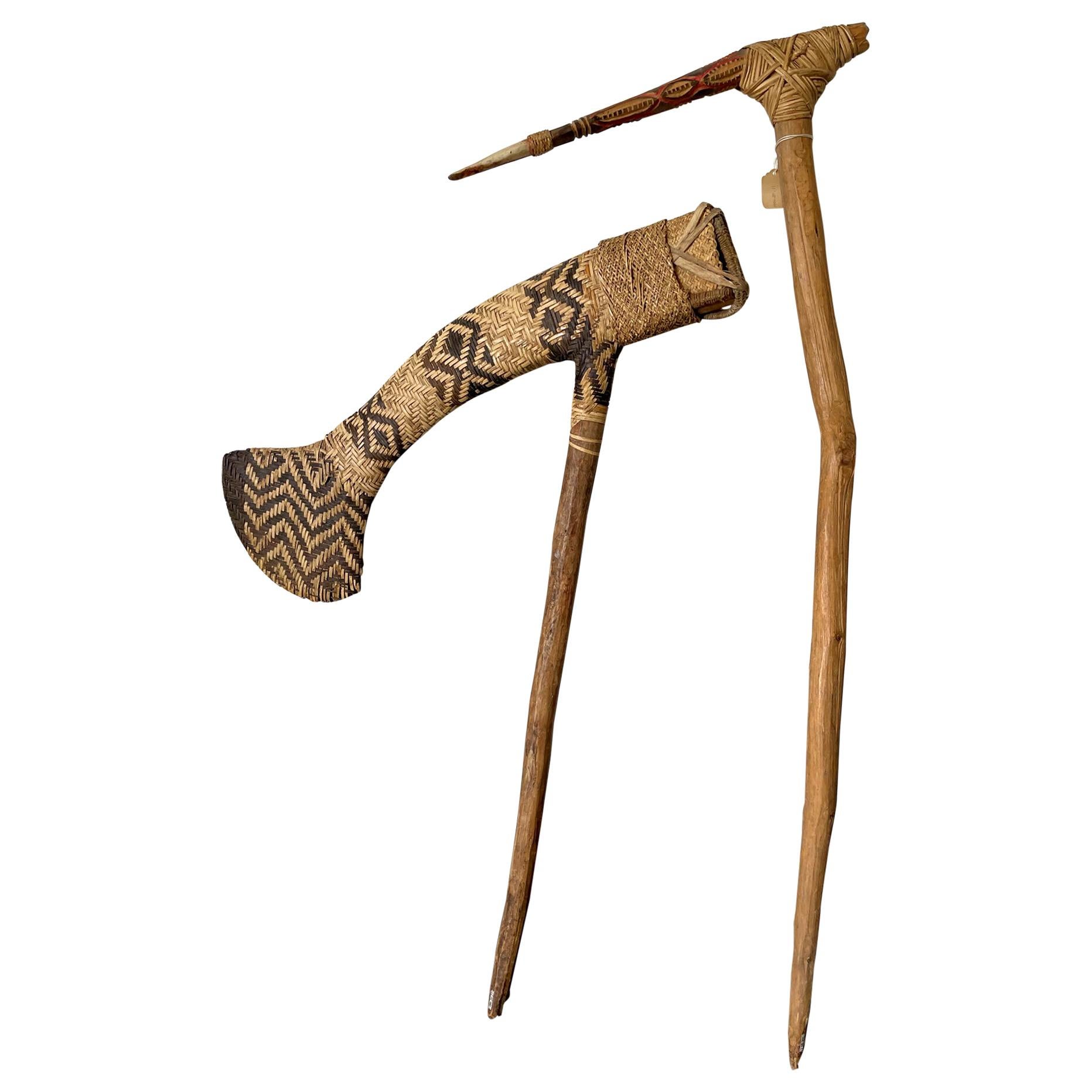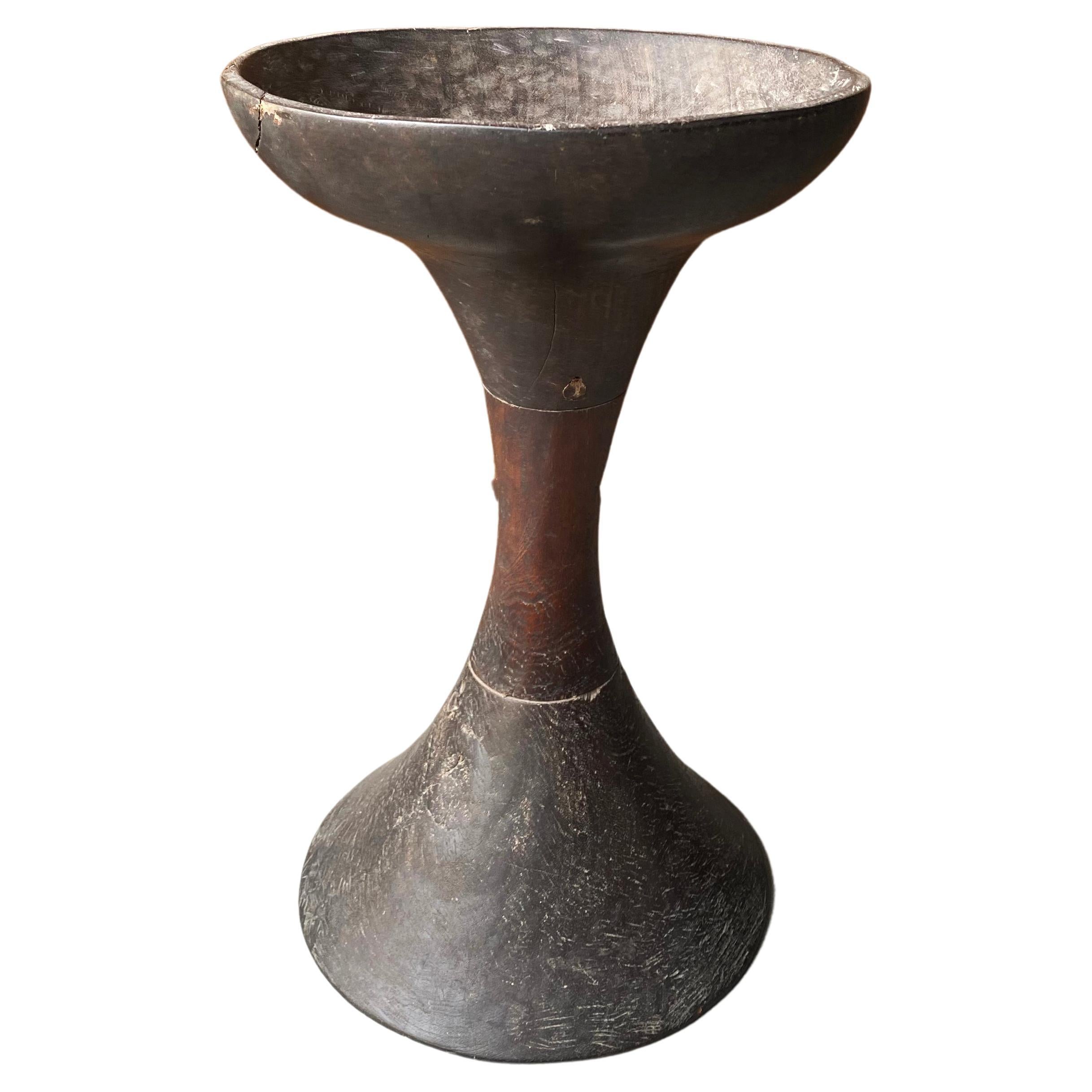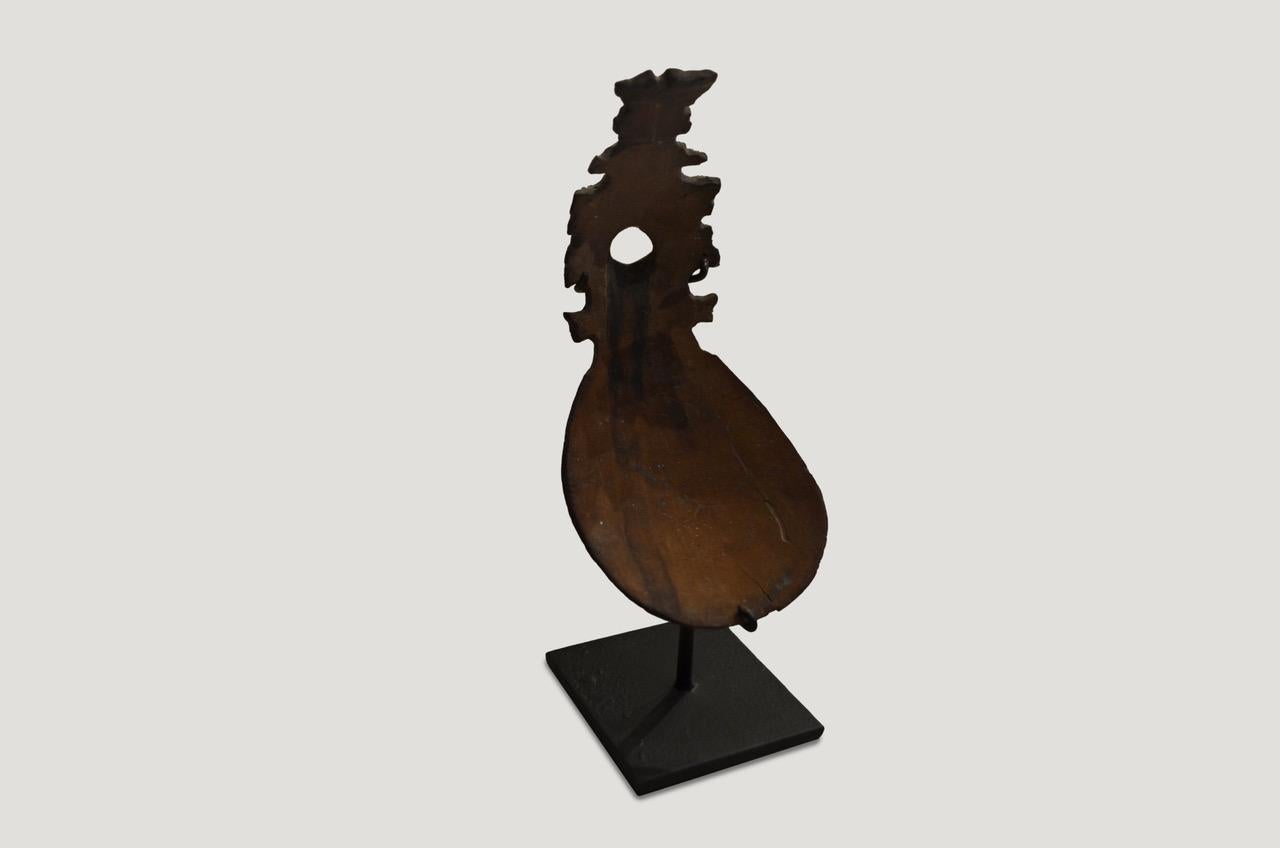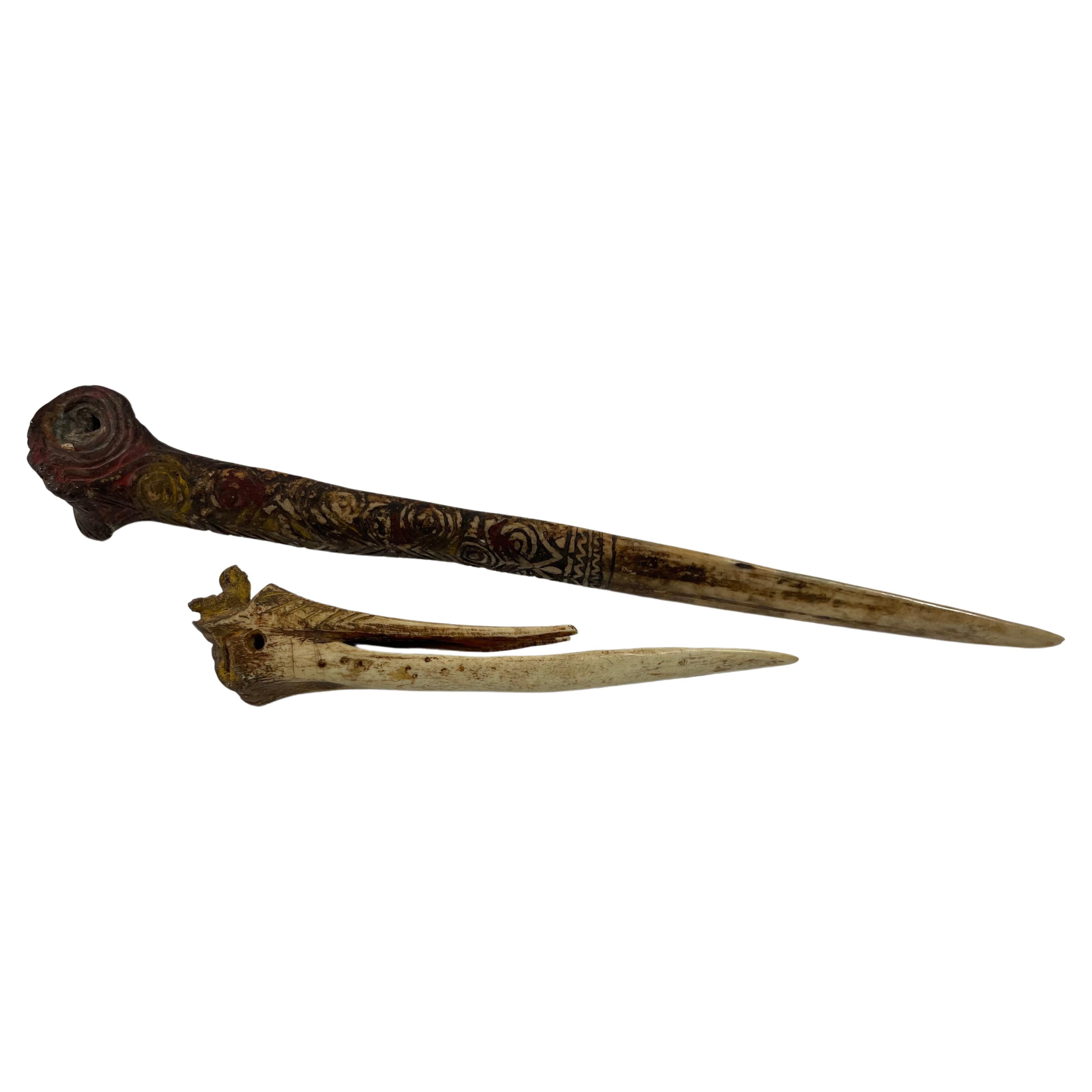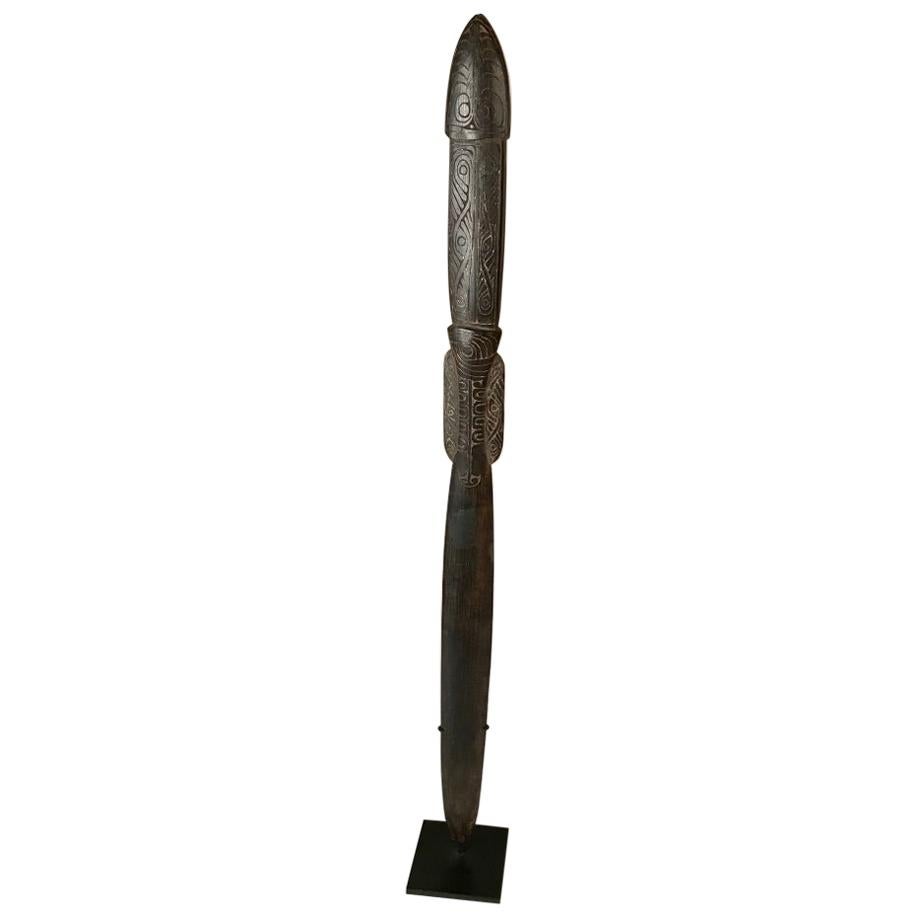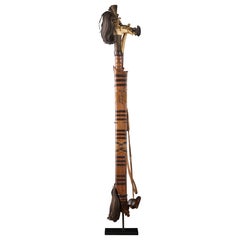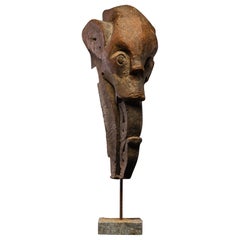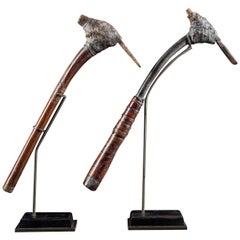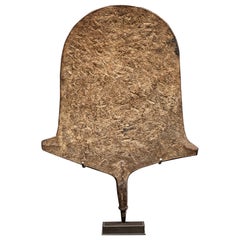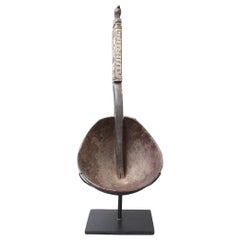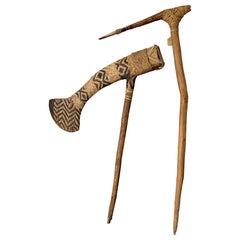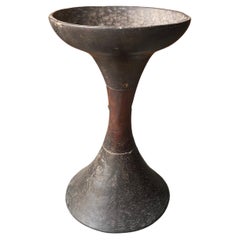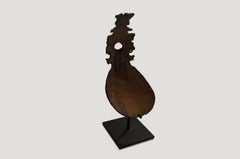Items Similar to Ceremonial Rice Spoon Toraja Culture, Celebes Island (Sulawesi), Indonesia
Want more images or videos?
Request additional images or videos from the seller
1 of 8
Ceremonial Rice Spoon Toraja Culture, Celebes Island (Sulawesi), Indonesia
$1,122.38
£841.29
€950
CA$1,541.96
A$1,721.45
CHF 902.02
MX$21,072.27
NOK 11,455.60
SEK 10,801.18
DKK 7,231.75
Shipping
Retrieving quote...The 1stDibs Promise:
Authenticity Guarantee,
Money-Back Guarantee,
24-Hour Cancellation
About the Item
A pair of exquisite Toraja rice spoons from Indonesia's Sulawesi Islands, featuring elongated bowls and gracefully curved handles that complement the overall design. Each spoon is intricately carved with delicate, elegant lines, showcasing a rich color and remarkable patina, along with darkened staining that hints at years of use.
- Dimensions:Height: 5.12 in (13 cm)Width: 1.58 in (4 cm)Depth: 0.4 in (1 cm)
- Materials and Techniques:
- Place of Origin:Indonesia
- Period:
- Date of Manufacture:-
- Condition:Wear consistent with age and use. Minor losses.
- Seller Location:Leuven , BE
- Reference Number:1stDibs: LU3301142501872
About the Seller
5.0
Vetted Professional Seller
Every seller passes strict standards for authenticity and reliability
Established in 2017
1stDibs seller since 2017
171 sales on 1stDibs
Typical response time: 7 hours
- ShippingRetrieving quote...Shipping from: Leuven , Belgium
- Return Policy
Authenticity Guarantee
In the unlikely event there’s an issue with an item’s authenticity, contact us within 1 year for a full refund. DetailsMoney-Back Guarantee
If your item is not as described, is damaged in transit, or does not arrive, contact us within 7 days for a full refund. Details24-Hour Cancellation
You have a 24-hour grace period in which to reconsider your purchase, with no questions asked.Vetted Professional Sellers
Our world-class sellers must adhere to strict standards for service and quality, maintaining the integrity of our listings.Price-Match Guarantee
If you find that a seller listed the same item for a lower price elsewhere, we’ll match it.Trusted Global Delivery
Our best-in-class carrier network provides specialized shipping options worldwide, including custom delivery.More From This Seller
View AllTraditional Tribal Mandau (Parang Ilang) Sword – Dayak People, Borneo
Located in Leuven , BE
Traditional Tribal Mandau (Parang Ilang) Sword – Dayak People, Borneo
The Mandau is a traditional sword of the Dayak people of Borneo, revered both as a cultural artifact and a weap...
Category
Early 20th Century Indonesian Antiquities
Materials
Metal
Architectural hardwood Ornament (Singa) from the Toba Batak people, Sumatra.
Located in Leuven , BE
The central image in Toba Batak art is the singa, a supernatural creature whose likeness protects individuals, homes, and communities from malevolent supernatural forces. The name singa derives from the Sanskrit word meaning lion. However, the Toba Batak singa...
Category
Antique Late 19th Century Indonesian Folk Art Sculptures and Carvings
Materials
Hardwood
Ethno Design Pair of Early Native Tribal Ceremonial Decorated Adze Tools
Located in Leuven , BE
An adze is a cutting tool similar to an axe but with a cutting edge perpendicular to the handle rather than parallel. Toraja people from Sumatra Island, used for wood carving, were made from nephrite (also known as jade) in the South Island. In the North Island they were commonly made from greywacke or basalt. At the same time on Henderson Island, a small coral island...
Category
20th Century Oceanic Mounted Objects
Materials
Wood
Ethnic Design-Bridal Iron Hoe Currency, Afo Peoples Nigeria
Located in Leuven , BE
Used as forms of currency, they could also serve as a musical or ritual object. Displayed on a custom mount.
Category
Antique 19th Century Nigerian Mounted Objects
Materials
Iron
Ethnic Design-Ceremonial Double Gong with Beaded Handle;
Located in Leuven , BE
This Double Gong bell originating from the Bamileke communities in Cameroon is a functional instrument played with wooden sticks.
Category
Antique 19th Century Cameroonian Mounted Objects
Materials
Iron
Aboriginal People, Australia, Tiwi Painted Ritual Object and Clapper Sticks
Located in Leuven , BE
Aboriginal People, Australia, Tiwi painted ritual object and clapper sticks.
Category
20th Century Australian Tribal Art
Materials
Wood
You May Also Like
Ritual Ladle of Wood and Coconut Shell from Timor Island, Indonesia, circa 1950s
Located in London, GB
Ritual ladle of wood and coconut shell from Timor Island, Indonesia (circa 1950s). Intricate spoons and ladles were most likely used for large ceremonial feasts and offerings to ance...
Category
Vintage 1950s Indonesian Tribal Sculptures and Carvings
Materials
Wood, Coconut
$489 Sale Price
20% Off
Two Ceremonial Weapon from Highlands of Papua New Guinea Provenance
Located in Atlanta, GA
Two Oceanic ceremonial weapons from PNG highlands circa 20th century. It consists of two pieces. The first is an ax with a wood shaft and a flat elongated he...
Category
Mid-20th Century Papua New Guinean Tribal Tribal Art
Materials
Rattan, Wood
Toraja Ceremonial Bowl, Sulawesi, Indonesia Early 20th Century
Located in Jimbaran, Bali
This wood ceremonial bowl was crafted by the Toraja tribes people of the mountain highlands of Sulawesi, Indonesia. It is hand-crafted using 3 separate...
Category
Early 20th Century Indonesian Other Decorative Bowls
Materials
Wood
Antique Coconut Wood Rice Spoons
Located in New York, NY
We have a collection of beautiful, antique coconut wood spoons set on a stand. All unique, all finely hand carved. From Sumatra. The price reflects one.
These antique rice spoons...
Category
Antique Early 1900s Primitive Tableware
Materials
Wood, Coconut, Reclaimed Wood
$198 / item
Antique Ethnic Artifact Sepik River Cassowary Bone from Papua New Guinea
Located in North Hollywood, CA
Antique Ethnic Artifact Sepik River Cassowary Bone from Papua New Guinea
For many groups in Papua New Guinea, bone was an important medium for making tools of all types. This artifact is made from leg bone of a cassowary, a large, flightless, and extremely dangerous, bird.
Cassowaries also play an important role in the mythology of groups in the Sepik River area.
Though no longer used these bone artifacts are still used ceremonially. They often play important roles in male initiation and other rituals. They are also worn as personal adornment by tucking them into a band of braided fibers worn around the upper arm.
Antique Ethnic Bone Cassowary Artifact with minimal carving and incised design confined to the joint end.
A small hole has been drilled through from both sides of the top and presumably for the threading of a cord.
The bone has been partially divided near the top and to form two prongs that project down the back of the dagger possibly allowing the user to wear is tuck into a waist band or belt.
Origin Papua New Guinea Maprik Dist Area
From the Art Collection of Marian and John Scott, acquired in 1962.
Similar items are in display in the Timothy S. Y. Lam Museum of Anthropology.
Purchased from the amazing private collection of Mark Lissauer who spent his life collecting niche ethnographic pieces.
About Mark Lissauer:
Mark Lissauer spent forty years travelling abroad for months at a time collecting ethnographic artefacts primarily from New Guinea and the islands of the West Pacific, and from Asia and Himalayan countries. Fluent in five languages and having in the course of business travelled to more than forty countries, Mark is well-known to museums and art-collectors around the world for his long career and his interesting and diverse collection of rare ethnographic material.
Mark knows the origin and symbolism of each piece. Through extensive research and more than ninety trips around the globe, Mark familiarised himself with the traditions of the various cultures he visited in order to understand the meaning of each object to its region and tribe. His home has a specialist library and several rooms are filled with tribal carvings, textiles and ethnographica.
He acquired his first tribal piece in 1948 during a business trip to Milne Bay, New Guinea, and has since documented the acquisition of some 35,000 items. Several thousands of these have been sold to important private collections and museums worldwide, including the Rockefeller Museum, the British Museum and the Musée National des Arts d’Afrique et d’Océanie, now incorporated into the Louvre Museum.
Estimator certificate of authenticity by Wayne Heathcote Tribal Art Dealer and Expert.
Heathcote has a flash gallery in Brussels, where much of the tribal art business is centred, and is an expert at Sotheby's tribal art sale...
Category
Early 20th Century Folk Art Tribal Art
Materials
Bone
Oceanic Carved Hardwood Lime Spatula, Papua New Guinea
Located in Stamford, CT
A Papua New Guinea hand carved ebony lime spatula covered with continuous swirl designs etched on the open handle and shaft, with some traces of lime stil...
Category
Mid-20th Century Indonesian Tribal Sculptures and Carvings
Materials
Ebony
More Ways To Browse
Indonesian Carved Furniture
Spoon Carved
For The Sofa
Paneled Room
Used Glass Dining Tables
Designer Lamps
Hand Chair
Long Vintage Vintage
Art Pairs
Antiques Victorian
Vintage French Style Furniture
Neoclassic Furniture
Used Chair Frames
Vintage Characters
Mid Century Murano Glass
Table Legs Wood
Used Furniture Gallery
A4 Frame
